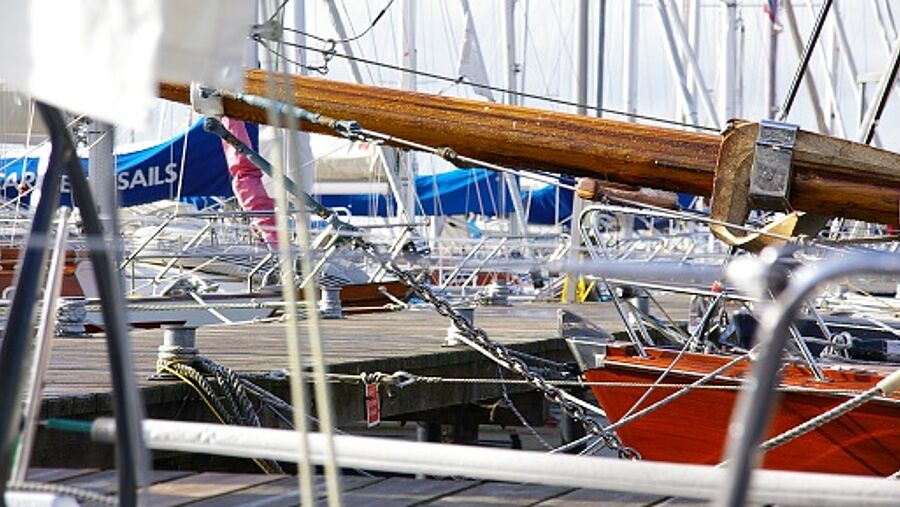Safe Berthing
Strong winds, onlookers at the jetty and a narrow berth – even the most experienced sailors can sometimes feel the stress in such a situation.
Sometimes the mooring manoeuvre goes smoothly. However, when there are challenging factors, it can be quite trying. An undamaged and safely berthed yacht is what counts at the end of the day.

"At Pantaenius we handle around 6,000 claims every year. Damage as a result of a collision during berthing is unfortunately not uncommon," says Raquel Reast, who works in the Spanish claims department. "Often the situation is simply misjudged, you do not react in time nor have sufficient room to rectify a manoeuvre, which can often result in an impact against the neighbouring boat or even the jetty."
Thinking ahead
However, a successful mooring manoeuvre is only half the battle, explains Raquel. "Many of the claims we handle occur after mooring and can usually be traced back to inappropriately tying up, inadequate or insufficient fenders or incorrectly attached objects on board. You can leave your boat on a calm and sunny day however, it can be quite different tomorrow. This risk is often underestimated."
The motto is therefore to act with foresight, especially those who plan to leave their boat on a berth for a long period of time. In this case, they should prepare it in such a way that it can withstand more extreme weather conditions and regularly check the mooring lines. Preventative measures such as placing stainless steel mooring springs, using spring lines, ensuring adequate distance from the jetty, plus ensuring a sufficient number of fenders should all really be a matter of course. Especially with fenders, it is advisable not to trust those of the neighbouring boat and to ensure that yours are set up at different heights as quite often, when the boats sway, the fenders shift out of position and sometime slide up.
If you are not able to check your boat for a long period of time, you should also ask a contact person, such as the harbour master, to check on your boat at regular intervals and particularly in difficult weather conditions.
Further sources of danger are any unattached parts on deck or on the mast. Loose lines with shackles, due to wind and movement of the boat, can cause damage to the mast as well as to the neighbouring boats. The same applies to tarpaulins. To prevent loose eyelets from hitting the boat in the wind, care should be taken to ensure that they are properly fastened in all places.
Anyone who notices that boats moored side-by-side have moved dangerously close to each other, or that a boat has suffered damage because its lines are not correctly tied, should promptly inform the harbour master who will notify the owner and if necessary, rectify the lines to avoid further damage.
